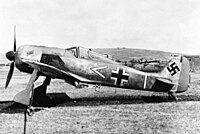
Photo from wikipedia
To investigate the questions: (1) does tank size affect fish performance; (2) does tank size prior to an experiment affect later fish performance and (3) how does performance in experimental… Click to show full abstract
To investigate the questions: (1) does tank size affect fish performance; (2) does tank size prior to an experiment affect later fish performance and (3) how does performance in experimental tanks compare with rearing in industry-scale cages, Atlantic salmon smolts were acclimatized to 190, 3 or 0.9 m3 tanks (Phase 1; 1.5 months) before redistributed to Phase 2 for 5 months. Question 1: fish in 190 m3 tank were redistributed to 0.9 m3 (190 m3 → 0.9 m3), 3 m3 (190 m3 → 3 m3), or 103 m3 (190 m3 → 103 m3) tanks. Question 2: fish in 0.9 m3 tanks were redistributed to 3 m3 tanks (0.9 m3 → 3 m3), and compared to fish from 190 m3 tank (190 m3 → 3 m3). Question 3: fish were placed directly in 3 m3 tanks, not moved (3 m3 → 3 m3), and compared to reference sea cages. Phase 2 mortality: 190 m3 → 0.9 m3 (46%), 190 m3 → 3 m3 (29%), 190 m3 → 103 m3 (19%), 3 m3 → 3 m3 and 0.9 m3 → 3 m3 (<5%). Most mortality happened shortly after transfer. Our study suggests tank size dependent performance, based on growth and feed intake that increased with tank size. 190 m3 → 103 m3 fish were more active than 190 m3 → 0.9 m3 and 190 m3 → 3 m3 fish. 190 m3 → 103 m3 tanks had lowest relative variance. Previous tank scale history affected survival, since 0.9 m3 → 3 m3 fish showed higher survival than 190 m3 → 3 m3 fish. However, previous scale history did not affect growth rate, feed intake or somatic indexes. Fish performance in 3 m3 → 3 m3 tanks did not differ from the reference sea cages. However, fish in 103 m3 tanks performed better than reference cages, suggesting potential for improved commercial production. This study demonstrates that management practices can influence fish performance and should be taken into account when designing experiments.
Journal Title: Aquaculture Research
Year Published: 2017
Link to full text (if available)
Share on Social Media: Sign Up to like & get
recommendations!